Watson’s Approach to the Weightless Worm
A few tricks that might help you finesse more fish with this classic rig
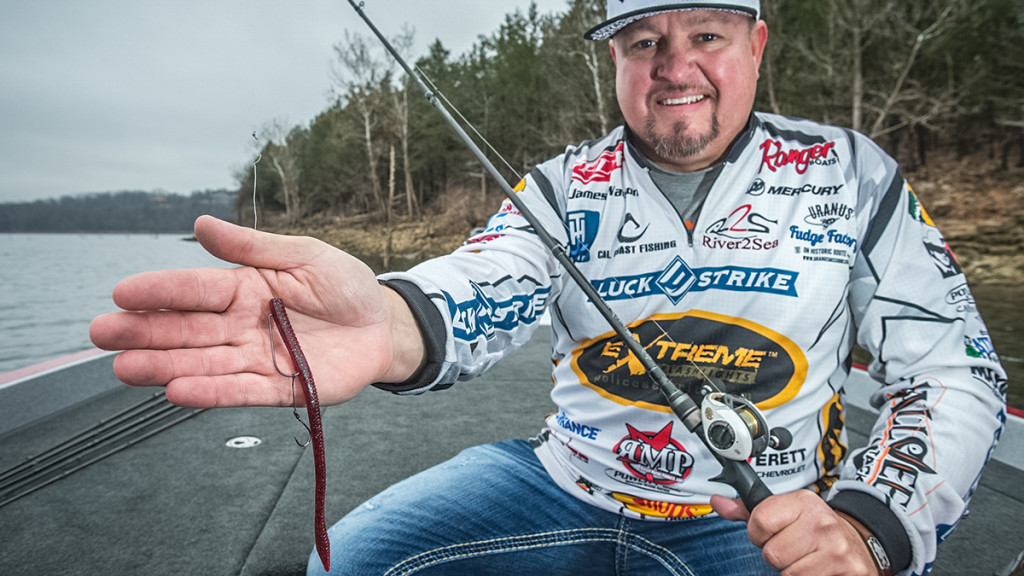
As a former drill sergeant in the U.S. Army, James Watson is a pretty tough guy, but he’s still not afraid to pull out a spinning rod and finesse up a few keepers by twitching a weightless worm just under the surface when the situation requires it. His technique, while not entirely unique, is a slightly different approach from the norm.
The Worm
Watson uses 6-inch straight-tail worms such as the Luck-E-Strike Live Motion Series Con Man and rigs them Texas style with a 3/0 offset round-bend worm hook.
Favorite colors include Merthiolate, which is a bright reddish orange color, black, and an off-white milky brown color he calls night crawler. Generally, the brighter colors get used in clear water, and the darker colors get used in stained water.
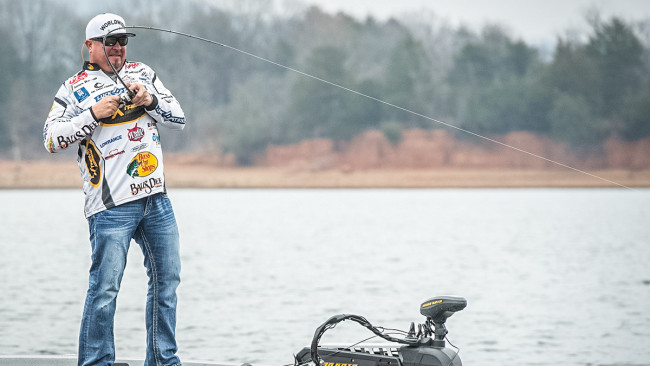
Tackle
Here’s where Watson really strays from the path.
“I like to throw it on 10-pound-test Maxima Ultragreen monofilament and a 6 1/2-foot, medium-action Waft baitcasting rod with a Bass Pro Shops Johnny Morris CarbonLite reel,” he says. “Vary rarely do I use a spinning rod. A lot of guys will throw a spinning rod with 10-pound braid and an 8-pound fluoro leader, and that will work. But I found that I can get a lot out of the right kind of stretch and pull. You don’t want to be too quick on the draw [when setting the hook]. That’s a mistake that people make when visually fishing for bass with a floating worm. If you have braided line and you have a fluorocarbon leader, your reaction time can almost snatch it away.”
The short length and medium action of the baitcasting rod allow it to load up on the cast even with the light worm. Watson says he can really whip the bait a good distance, and with roll-casts and careful targeting, can place it right where he wants it.
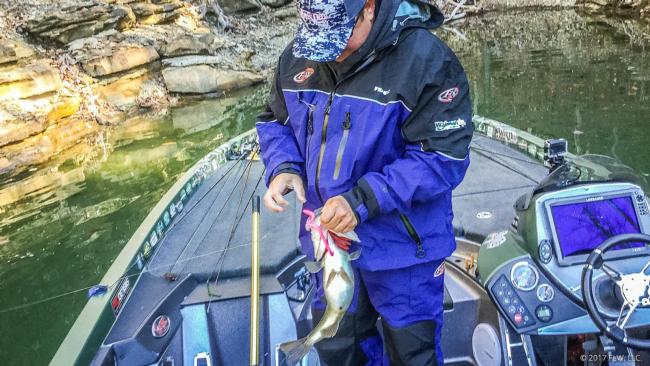
When Watson Uses It
Prespawn, spawn and early postspawn all fall within the window of opportunity when a weightless worm can be fished in shallow water effectively.
“That time of year I have a rod-and-reel combo set up just for it,” Watson says.
The primary limiting factor is water clarity.
“Anything real super muddy where you can’t see that thing more than a foot away, that’s just too dirty,” says Watson. “This is a visual technique. In off-colored water it’s still effective depending on how aggressive those fish are guarding or set up on the beds.
“In the prespawn it’s effective to cover water – and during the spawn. In postspawn it’s very effective to just slow down and throw it ahead of you, and you’re looking for bass that are still guarding their old beds.”
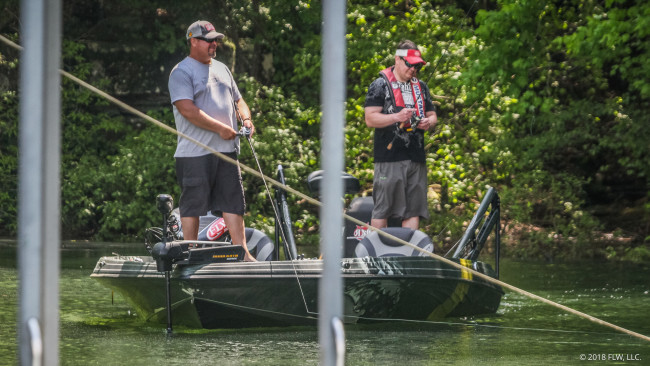
Speed of Approach
In the prespawn and spawn, especially, Watson fires casts into areas where he thinks there might be a bed or a staging fish, works the worm a few times quickly, and then hits the next target, effectively covering water.
“It doesn’t require a lot of twitching. Just throw it, let it sink a little bit and keep your foot on the trolling motor. A lot of times the fish will come up and show themselves. That’s the key, too. It’s critical that you see which direction he’s coming from. That’s why I love my Costa sunglasses – for being able to see the fish boil on the worm. That is a catchable fish. It might not be catchable right away, but you need to make a waypoint or mental note of where he is and come back and make a really long blind-cast.
“I mostly keep it just under the surface,” he adds. “Very rarely during prespawn and spawn do I let it go too far down. Sometimes after the postspawn I’ll tend to let it sink a little bit more. It just depends on what I’m seeing at the time.”
In the postspawn, the “spot” that a bass is using gets bigger, says Watson, because the fish is no longer locked down. They “loosen up” in an area. He still covers water with the worm, but instead of making a specific, targeted cast, he fires a blind-cast out in front and slowly works the worm back to the boat with soft twitches or pulls.
Settling on the perfect cadence takes trial and error, but in many cases Watson believes less is more.
“I catch a lot of fish I see just by throwing it in front of him and letting it sit,” he says. “Usually, it’s just a twitch-twitch-pause. Just keep on watching it. It’s important that you watch your bait all the way.”
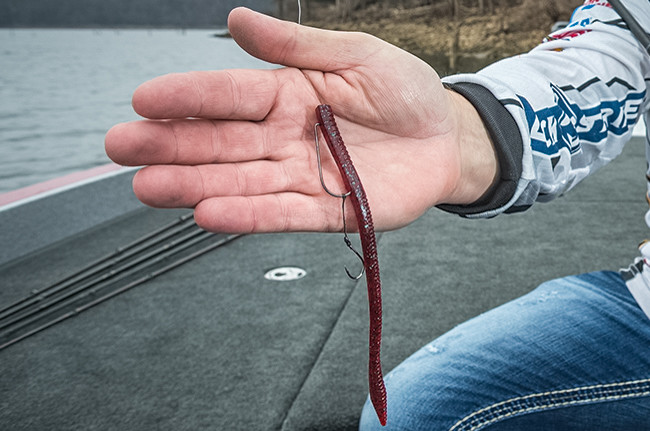
Hooking Up
Watson’s gear is chosen particularly for getting good hooksets, but technique is important, too.
“You need to watch them turn on it,” he says. “Let them eat it, turn and move on it, then use a sweep-set.”
If he’s missing too many fish on the weightless worm, Watson adds a No. 2 mosquito stinger hook with about a 1-inch-long (or shorter) piece of 50-pound-test braid. The stinger gets attached to the bend of the worm hook and dangles freely behind.
“That makes it impossible to thread the nose of another worm on the hook, so you have to cut the line off and reverse-thread the hook – pushing the [worm hook’s] eye through the underside of the worm,” he says.